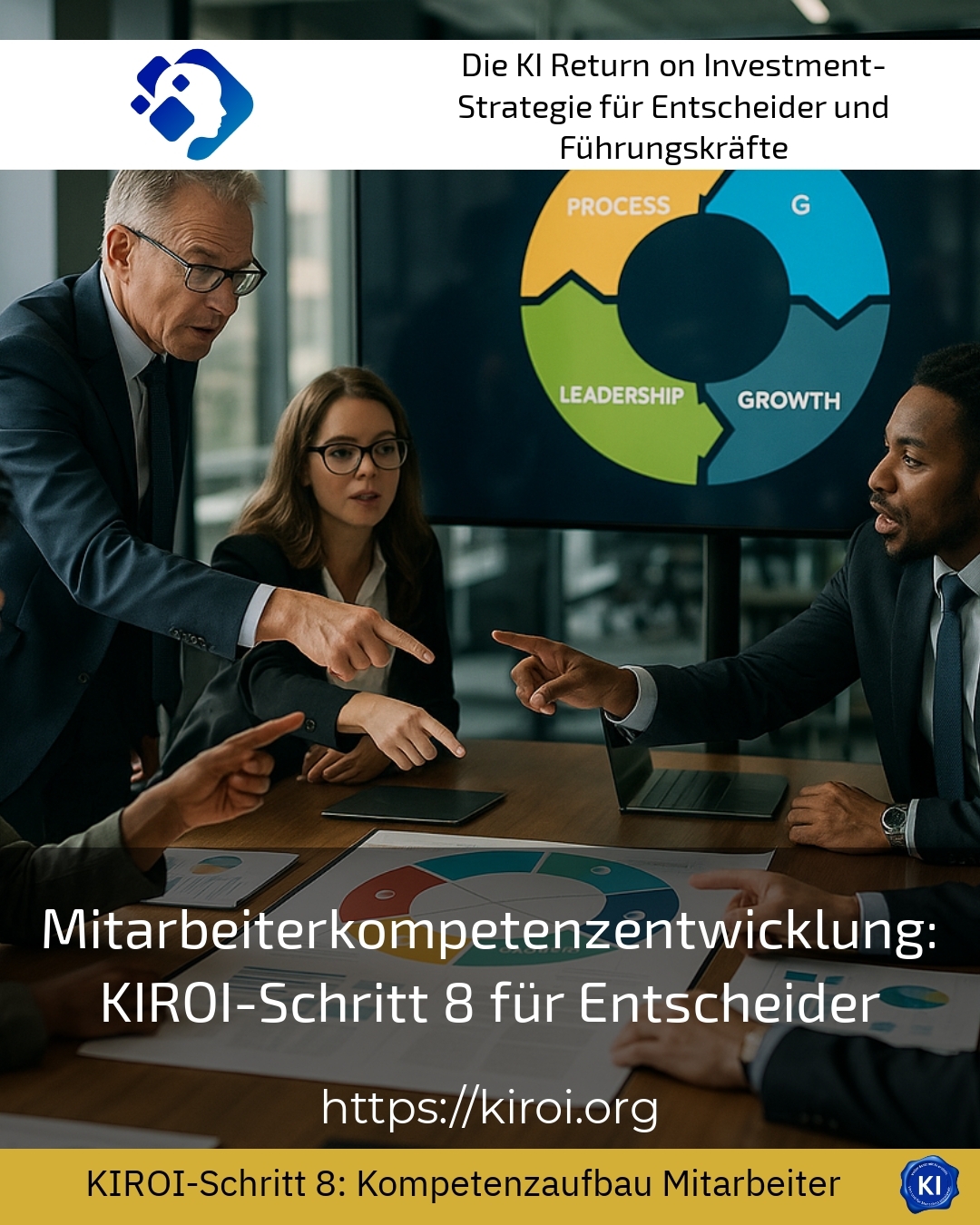Today, targeted employee skills development is a key lever for sustainable corporate success. Many decision-makers recognise that traditional training alone is no longer enough. Instead, holistic approaches are needed that promote individual potential and actively involve teams in the development process. KIROI Step 8, in particular, is a systematic and strategic approach to employee skills development. This is not just about imparting knowledge, but also about strengthening self-organisation, a sense of responsibility and the ability to actively shape change.
Why employee skills development is crucial today
Companies face constant challenges. Technological developments, new forms of work and changing requirements require employees to continuously develop their skills. Employee skills development helps to recognise future skills gaps at an early stage and close them in a targeted manner. Many managers report that this approach enables them to react more quickly to new challenges.
An example from the IT sector: a team of developers is working on a complex project. Through regular workshops and coaching sessions, the employees expand their technical expertise. At the same time, they improve their communication and collaboration. The result is a motivated team that solves complex tasks independently.
Another example from the manufacturing industry: here, employee skills development is promoted through on-the-job training and job rotation. Employees learn new processes and can therefore react more flexibly to changes. Companies in the financial sector also rely on individual learning paths to retain their employees in the long term.
Employee skills development as a strategic process
Clear target definition and individual potential analysis
A clear definition of objectives is crucial for successful employee skills development. The objectives are based on the corporate strategy and future requirements. A targeted potential analysis helps to identify the right employees and recognise their development opportunities.
Telecommunications companies, for example, use regular feedback meetings and development plans to increase the loyalty of their employees. Service companies report that a mix of training and coaching accelerates individual development and strengthens team spirit.
Another example: A retail company carries out annual skills analyses. The results flow directly into personnel development planning. In this way, targeted measures are derived that strengthen both professional and social skills.
Integration of practical phases and feedback culture
The integration of practical phases is an important part of employee skills development. Employees apply newly acquired knowledge directly in their day-to-day work. This promotes the understanding and sustainability of what they have learnt.
An example from logistics: employees complete on-the-job training and take on new tasks. They receive regular feedback and reflect on their progress. This enables them to develop not only technical but also methodological skills.
Another example: A service company promotes employee skills development through project work. Employees work on challenging projects that expand their competences. They gain new perspectives and learn to take on responsibility.
Employee skills development in a team context
Coaching and mentoring as development impulses
Coaching and mentoring are personalised development methods. An experienced mentor or professional coach accompanies the employee over a longer period of time. They offer support, feedback and guidance for personal and professional development.
An example from the financial sector: one company relies on mentoring programmes. Young employees receive targeted support and learn from experienced colleagues. This not only strengthens their professional expertise, but also their soft skills and career development.
Another example: an IT company uses one-on-one coaching sessions. Employees receive personalised feedback and learn how to overcome challenges. This promotes self-organisation and a sense of responsibility.
A third example: A manufacturing company organises regular team coaching sessions. The employees reflect together on their progress and develop solutions for current challenges.
Employee skills development with transruption coaching
transruptions coaching helps companies to develop customised strategies for employee skills development. This is not just about imparting knowledge, but also about strengthening self-organisation and a sense of responsibility. The coaching concept supports decision-makers in implementing development measures in a structured manner.
This provides decision-makers with concrete tools and impulses that support them in managing skills development processes. In addition, the sustainability and effectiveness of the measures is increased by involving employees as active designers of their learning process.
An example from the IT sector: A company works with transruptions coaching to strengthen employee skills development. Employees receive regular workshops and coaching sessions. The result is a motivated team that solves complex tasks independently.
Another example: A manufacturing company uses transruption coaching to promote employee skills development through on-the-job training and job rotation. Employees learn new processes and can therefore react more flexibly to changes.
A third example: A service company relies on individual learning paths to support employee skills development. Employees receive targeted support and learn how to master challenges.
BEST PRACTICE with one customer (name hidden due to NDA contract) In a medium-sized company in the logistics sector, employee skills development was promoted through regular workshops and coaching sessions. The employees expanded their professional skills and improved their communication and collaboration. The result was a motivated team that solved complex tasks independently and achieved the company's goals more quickly. Employee skills development was established as a strategic process and regularly evaluated.
My analysis
Employee skills development is a key success factor for companies. It helps to recognise future skills gaps at an early stage and close them in a targeted manner. The sustainability and effectiveness of the measures is increased through the clear definition of objectives, individual potential analysis, integration of practical phases and an open feedback culture. Transruption coaching supports decision-makers in developing customised strategies and actively shaping the change process.
Further links from the text above:
Skills development: definition + successful examples
Rethinking employee development: KIROI-8 for strong teams
What is skills development? - teamazing Lexicon
Employee skills development for decision-makers - KIROI
Successful skills development: 9 tips and 3 ...
For more information and if you have any questions, please contact Contact us or read more blog posts on the topic Artificial intelligence here.















